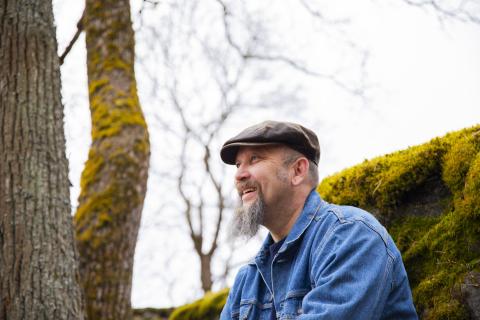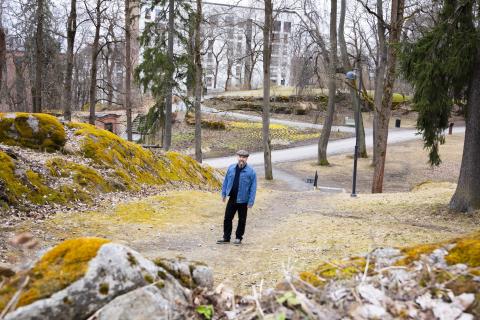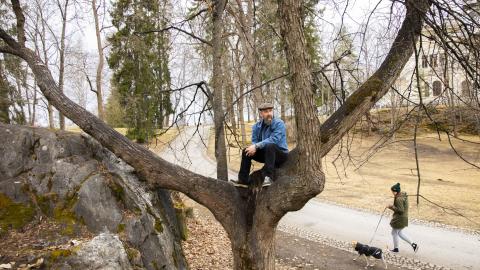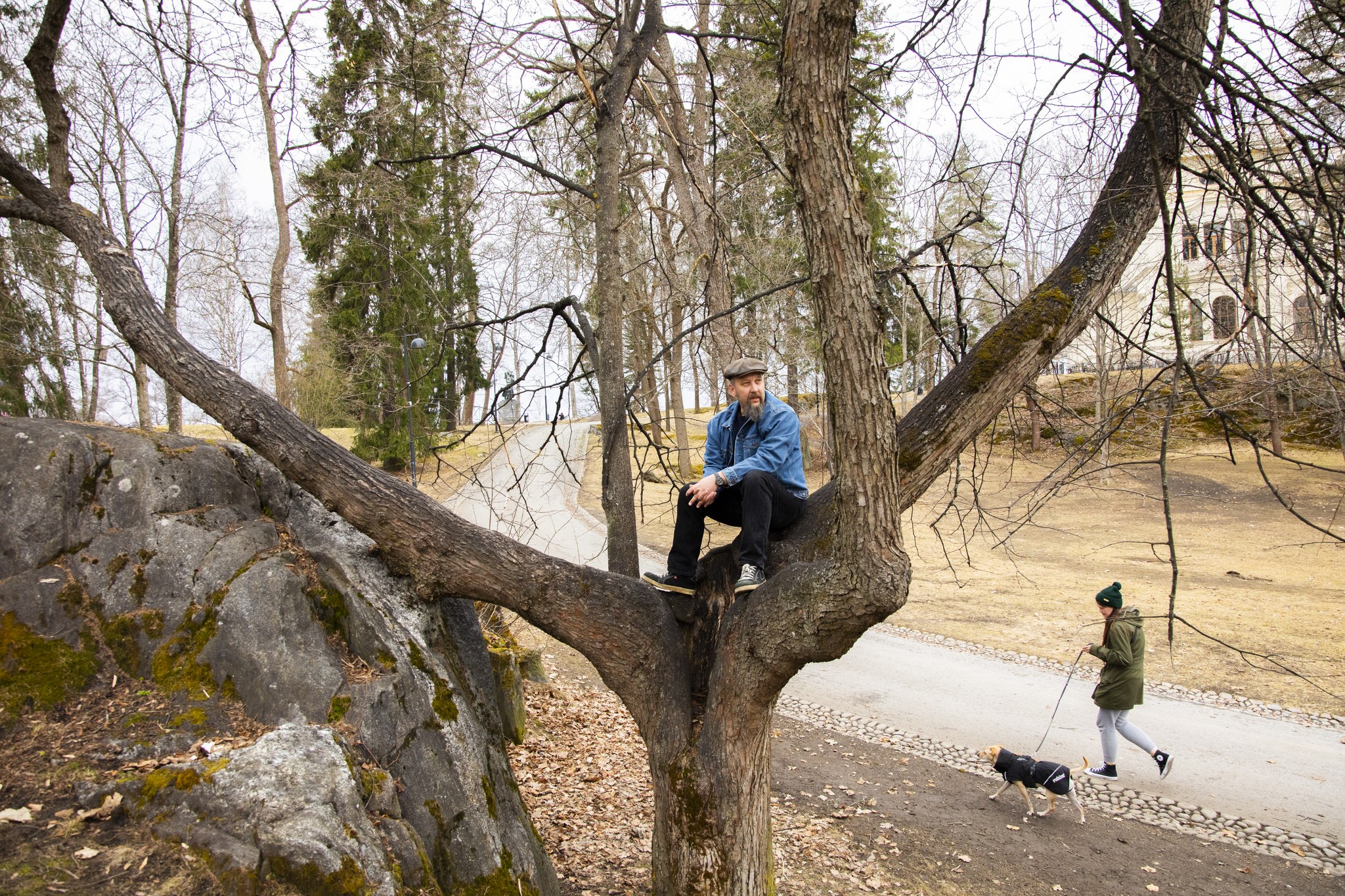From buffers against fire to shared living rooms for citizens – Tampere parks celebrate their 150th anniversary
Manager of Parks and Gardens Timo Koski takes in his surroundings in Näsinpuisto park. Just over one hundred years ago, some of the trees reaching towards the sky were only small saplings. The trees have borne witness to several generations of people strolling through the park.
‒ If the trees could talk, it would be rather interesting to hear the story they would tell about Tampere’s formation. One generation is ultimately a short time period, if we compare that to how the parks have evolved. In a sense, trees and parks offer Tampere residents a way to connect with history and the past, says Koski.
This year marks the 150th anniversary of Tampere’s parks. 1874 is considered to be the year when Tampere's parks were created, because in that year, Karl Johan Gauffin was appointed as the first gardener of the City of Tampere. Tampere was one of the first Finnish cities to establish a position for a city gardener.
‒ The job description of city gardeners has certainly changed over the years. Previously, the city gardener was responsible for the operations of the entire unit. The position of caretaker at the Aleksanterin koulu school was also a part of Gauffin’s job, Koski explains.
The city gardener’s job largely consisted of supervising workers. Today, the Manager of Parks and Gardens is no longer responsible for the entire unit’s operations. Instead, they act in an expert role. Koski says that his work involves many discussions with experts, consultants, Tampere infrastructure and the municipality’s residents. He is also able to enjoy the great outdoors at work.
‒ I can go outside whenever I want. In fact, visiting the parks is something of a requirement. However, the job does not involve any physical field work.
A complete turnaround in park culture
In 1827, the City of Turku experienced a tragedy when almost the entire city was destroyed in a fire. After this incident, the City of Tampere also began looking for ways to prevent fires in the city. In fact, parks such as Hämeenpuisto were initially constructed mainly as protection against fire.
Previously, people would only use parks to go on walks, and it was common to visit parks on holidays in order to meet other citizens. Walking on the lawns was prohibited. Park culture has changed a lot over the years.
‒ Park culture means that parks are shared living rooms for citizens. They are places for relaxation and recreation. That is what they should be, says Koski.
In his opinion, one purpose of parks is to offer everyone the chance to get close to nature and to provide a place for recreation. Parks are also culturally significant.
‒ Parks are a part of our shared cultural history. One of our goals is to preserve the parks for future generations, thus maintaining a pleasant cityscape and producing a good and healthy environment for citizens.

Climate change and diseases pose a challenge for parks
In addition to park culture, the variety of species found in the parks has changed over 150 years. When the parks were built, a lot of species were brought in from abroad – for example, from Russia, Sweden or Central Europe – because Finland did not yet have seedling nurseries of its own. However, the City of Tampere set up its own seedling nursery soon after Gauffin was appointed.
‒ Naturally, the climate has changed a lot over 150 years, and the variety of species was much smaller than it is now. Today, trees that would have been native to southern Sweden at the time are able to thrive in Tampere, Koski says.
Nowadays, it is also important to consider the diversity of species while planning parks. Different plant diseases and insects can pose a threat to urban nature.
‒ A more diverse selection of tree species is better able to endure challenges brought on by climate change. National borders do not stop plant diseases and bugs.
Tampere's urban tree policy states that new tree species will be introduced in the city. The conditions under which different species thrive will also be tested in Tampere. The city began experimenting with tree species three years ago. The aim is to bring 50 new species and varieties to Tampere. 30 specimens of each plant species are brought to the city, so that, in total, Tampere will receive 1 500 trees.
The tree species include different types of cherry trees, coniferous trees, cork-trees, different types of beech trees and maple trees.
The trees are to be planted around the city.
‒ We are trying to find out where the trees would thrive the most and to plant them in a wide variety of locations. These include different street areas, plazas and parks. Our most extreme growth spots are located on the Kuninkaankatu promenade.
Parks evolve slowly
Timo Koski believes that some of the trees between the Aleksanterin koulu school and the Alexander Church could have come from the seedling nursery set up during Gauffin’s time. The oldest trees found in Tampere could be over 200 years old.
Parks may take decades to evolve, and trees may take centuries to reach their full height.
‒ Building parks is an investment that lasts for centuries, Koski says.
Setting up new parks is also a time-consuming process. It can take years for a park to progress from the design phase to a completed park. For example, a part of the city’s comprehensive plan for Niemenranta was created in the early 2000s, and a park is only now being built in the area.
‒ It is very rewarding to see a project completed. At that point, something tangible has been done to improve the citizens’ living environment. The most rewarding part is seeing people actually using the parks.

Parks introduce citizens to new forms of exercise
When we imagine parks, the first thing that comes to mind is often a green space located in the middle of a city. However, they can be much more than that. Parks are separated into natural and built parks.
Natural parks include scenic fields, meadows and forests that have been designated as parks in the town plan.
‒ We have cultivated scenic fields where sunflowers grow. This year, to celebrate the anniversary, we are planting potatoes with the aim of having citizens participate in the harvest later. We are also planting an oat field and will organise an event for harvesting oat bushels in the autumn, Koski says.
Tampere also has a lot of built parks. These include exercise areas, skate parks and sports fields. Koski says that the newest built park in Tampere is a trial bike track that was built in Kaukajärvi. Tampere also has a BMX track that meets national standards.
‒ Our aim is to create facilities for new forms of exercise that are currently increasing their popularity. In addition to gym class staples such as track and field or ice hockey, the parks offer opportunities to practice alternative forms of exercise.
It is unlikely that Gauffin, the city’s first gardener, would have been able to imagine 150 years ago the variety of parks found in Tampere today.
‒ The citizens of Tampere appreciate their parks and nature areas. The feedback has been mostly positive. If there is no feedback at all, that’s also a sign that we’ve done something right, Koski says.

